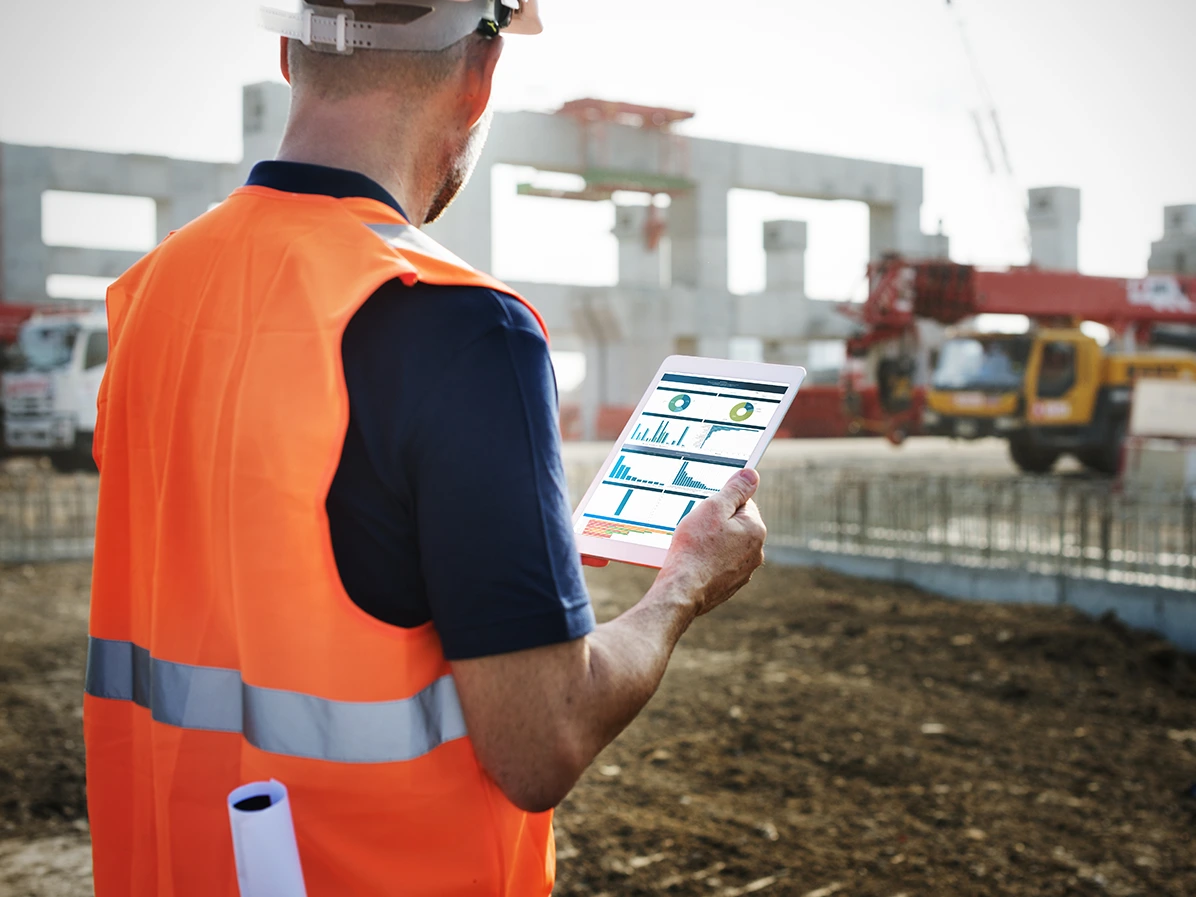Contents
The changing face of health and safety
23 November 2017 - Evotix
Health and safety doesn’t happen behind desks. So why are so many of our health and safety processes still desk based?
Adopting an agile approach to health and safety management
In the consumer world, we are used to having simple and intuitive apps on our mobile devices that help us, on the move, to do anything from send a text to book a cinema ticket to check the latest blog posts. Apps can understand our aims, preferences and context (location, time of day, etc.) and present relevant information and functionality to us.

The good news is that this functionality is coming to health and safety, in the form of simple to use mobile apps that present information about the local environment (nearby reported hazards for example) or advise on precautions (skid hazards due to forecast cold weather).
Already, organisations are changing safety culture by empowering employees to make a difference. Every employee can use an app to report an incident or near miss, access a risk assessment or record a safe or unsafe act. Safety messages can be pushed out and acknowledgement received. By making the experience interactive and showing that everybody has a role to play, safety becomes part of “the way we do things”. Upcoming releases will be transformative for health and safety culture, further enhancing existing functionality by mimicking that found in the consumer world.
Speaking your language
 The Office for National Statistics reports that, since 1997, the number of non-UK nationals working in the UK has increased from 928,000 to 3.56 million. Working across languages can be a barrier and poor communication increases workplace risk. The good news is that multilingual functionality closes gaps in communication by providing safety information in an employee's native language.
The Office for National Statistics reports that, since 1997, the number of non-UK nationals working in the UK has increased from 928,000 to 3.56 million. Working across languages can be a barrier and poor communication increases workplace risk. The good news is that multilingual functionality closes gaps in communication by providing safety information in an employee's native language.
Through innovative design, data can be collected locally in local language forms, but reported consistently and globally. Work processes can be seamless, for example, allowing the central team to review and approve locally generated content such as incident investigations or risk assessments. Multilingual capability is indispensable if you have employees for whom English is not their first language and who would otherwise be excluded from your safety culture.
Providing intelligence
Most organisations are effective in recording and investigating incidents, managing risks and keeping appropriate records. Some organisations are effective in applying lessons learnt from incidents, near misses (less commonly) and audits and subsequently putting preventative measures in place. But all of this activity is in some way reactive and backward looking. Very few organisations are systematic at interrogating their data, identifying trends, tracking leading indicators (such as safe and unsafe observations) and predicting where preventative measures will be most effective. 
The problem is that lots of relevant data is not captured; if it is captured, it is not accessibly and systematically stored; and even if it is stored, most organisations do not have the tools to make effective use of it. This “wasted data” is a ticking time bomb given the financial, reputational and legal repercussions of a health and safety breach.
Health and safety Business Intelligence (BI) tools eliminate lots of manual reporting processes and provide a live picture rather than just a weekly or monthly snapshot. The freed up time can be put to better use learning from the safety data available, benchmarking, identifying trends and taking preventative action. Relying on data-driven insights, rather than individual stakeholder opinions, reduces the potential for human error and uncovers the unexpected.
So next time you are stuck behind your desk with mounds of paperwork, manipulating reports and wondering just what you have to do create a stronger and more proactive safety culture, remind yourself that it does not have to be that way. Change is coming and early adopters amongst your peers may already be taking advantage of it.
This content appeared in an article in Health & Safety Matters November 2017.
Find Out How Health & Safety Software Can Benefit Your Business
RELATED BLOGS

Unlocking the Benefits of a Safety Management System
23 May 2024 - Evotix
Despite strides in technology and the adoption of safer practices, workplace injury and illness rates are persisting at alarming levels. In fact, it was reported by the International Labour..

Bridging Generation Gaps at Work To Build a Safer Environment
22 December 2022 - Evotix
The workforce is more diverse in age than ever before. One in three working adults in the US is a Millennial; and the picture is similar in the UK, with this generation making up more than 50% of the..

What is EHS Software? The Ultimate Guide
9 March 2022 - Evotix
The rate of workplace accidents is far too high. In fact, in some countries, it hasn’t been improving at all. Behind every one of those statistics is a name and a family – and that’s why at Evotix,..